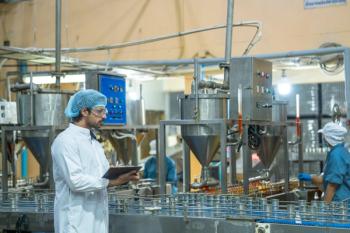
Microplastics analysis just got easier: Analysis direct on-filter
North America: Wednesday, November 16, 2022 at 11am PST | 1pm CST | 2pm EST Europe: Thursday, November 17, 2022, at 11am BST | 12pm CET Asia: Thursday, November 17, 2022, at 10:30 IST | 1pm SGT | 2pm JST | 4pm AEST Fast, easy, and accurate analysis of microplastics is a key need of anyone with an interest in this area. With the capacity to conduct this analysis directly on the filter in the Agilent 8700 LDIR for microplastics, this analysis has now reached a new level.
Register free:
Event Overview:
Microplastics are fast coming into focus as we are beginning to understand just how far these man-made products have made their way into ecosystems and food chains alike. While regulators are trying to understand the extent and toxicity of the problem, researchers and analytical methods bodies are working towards standardized analytical solutions to characterize these particles in terms of chemical identity, size, and shape.
Mid-infrared and Raman spectroscopy are fast emerging as leading techniques for this work. They are non-destructive and effective, and while they have benefits over traditional methods, they are neither fast nor simple. The Agilent 8700 LDIR Chemical Imaging system with a fully automated workflow for microplastics analysis changes this. It provides all the benefits of mid-infrared spectroscopy in a simple-to-use and fast solution. The latest development is the capacity to conduct this analysis directly on the filter used as the last step in sample preparation, increasing ease of use, speed, and accuracy.
Key Learning Objectives:
- Analysis direct on filters with a fast and simple automated workflow for microplastics
- How to optimize microplastics analysis with QCL (Quantum Cascade Laser) based infrared imaging
- How to optimize microplastics analysis with the 8700 LDIR
- Recent workflow developments in the 8700 LDIR including on-filter analysis
- Progress towards standardized methods and testing requirements
Who Should Attend:
- Microplastics researchers
- Microplastics analysts from commercial, QA, or research labs seeking faster and easier analysis methods
- Those interested in contamination of wastewater, seawater, freshwater, air, sediments, and food (such as fish, shellfish, crustaceans, and bottled water)
Speaker
Darren Robey
Product Manager: IR Imaging
Agilent Technologies
Darren Robey has worked with applied analytical techniques for more than 20 years in positions from laboratory technician to product manager. Working across various industries from food and agriculture to environmental and pharmaceuticals has given Darren a unique and broad experience. Over these 20 years, Darren has developed a keen interest in taking complex analytical techniques and developing systems and workflows to make them simple. Of particular interest has been removing the potential for the human factor to influence results, which is removing or limiting the potential for analyst error.
Register free:
Newsletter
Get essential updates on the latest spectroscopy technologies, regulatory standards, and best practices—subscribe today to Spectroscopy.





